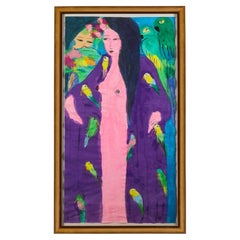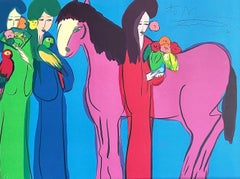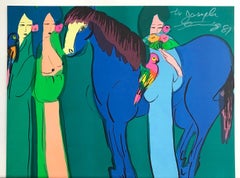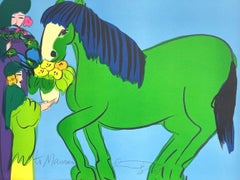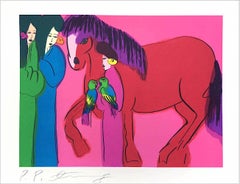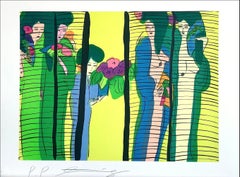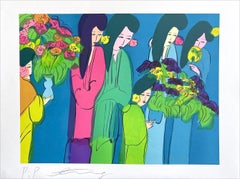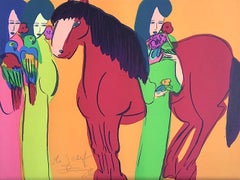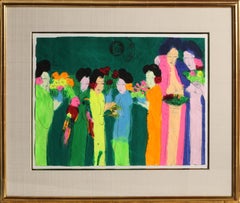Walasse Ting Geisha
Vintage 1980s Chinese Modern Paintings
Acrylic, Paper
1980s Contemporary Figurative Prints
Lithograph
1980s Contemporary Animal Prints
Lithograph
1980s Contemporary Figurative Prints
Lithograph
1980s Contemporary Figurative Prints
Lithograph
1980s Contemporary Figurative Prints
Lithograph
1980s Contemporary Figurative Prints
Lithograph
1980s Contemporary Animal Prints
Lithograph
Recent Sales
1980s Expressionist Figurative Prints
Acrylic, Rice Paper
1980s Expressionist Figurative Drawings and Watercolors
Acrylic, Rice Paper
1980s Contemporary Nude Drawings and Watercolors
Watercolor
1980s Contemporary Animal Prints
Lithograph
1980s Contemporary Animal Prints
Lithograph
1980s Contemporary Animal Prints
Lithograph
1980s Contemporary Animal Prints
Lithograph
1980s Contemporary Animal Prints
Lithograph
1980s Contemporary Figurative Prints
Lithograph
People Also Browsed
2010s Dutch Modern Decorative Bowls
Travertine
2010s Indian Organic Modern Decorative Dishes and Vide-Poche
Bronze
Early 20th Century British Art Deco Tobacco Accessories
Sterling Silver
Vintage 1970s Italian Space Age Architectural Elements
Fiberglass
Antique Early 1900s American Art Nouveau Table Lamps
Bronze
2010s Chinese Books
Paper
21st Century and Contemporary Vietnamese Minimalist Side Tables
Wood
Antique Late 19th Century European Moorish Architectural Elements
Wrought Iron
Antique Mid-19th Century English High Victorian Taxidermy
Other
Antique 1780s English Chinoiserie Wall Mirrors
Giltwood, Mirror
Vintage 1960s Dutch Mid-Century Modern Daybeds
Teak, Upholstery
21st Century and Contemporary Indian Mid-Century Modern Side Tables
Wood
Antique 19th Century Norwegian Paintings
Canvas
Late 20th Century Philippine Chinese Chippendale Chairs
Bamboo, Cane, Reed
Vintage 1960s Italian Neoclassical Planters and Jardinieres
Terracotta
20th Century English Tableware
Silver
Walasse Ting Geisha For Sale on 1stDibs
How Much is a Walasse Ting Geisha?
Walasse Ting for sale on 1stDibs
Walasse Ting was a Chinese-American visual artist and poet. His colorful paintings have attracted critical admiration and a popular following. Common subjects include nude women and cats, birds and other animals.
Ting was born in Shanghai in 1929. He left China in 1946 and lived for a while in Hong Kong, then settled in Paris in 1952. There, he associated with artists such as Karel Appel, Asger Jorn, and Pierre Alechinsky, members of the avant-garde group, CoBrA.
In 1957, Ting moved to the United States, and settled in New York, where his work was influenced by Pop art and Abstract Expressionism. He began primarily as an abstract artist, but the bulk of his work since the mid-1970s has been described as popular "figuratism," with broad areas of color painted with a Chinese brush and acrylic paint. He lived in Amsterdam in the 1990s, but regularly moved between there and New York.
Ting is the author of 13 books, including All in My Head (Walasse Ting & Roland Topor, 1974) and One Cent Life (E.W Kornfeld, 1964), a portfolio of 62 original lithographs by 28 artists, including Andy Warhol, Roy Lichtenstein, Tom Wesselmann, James Rosenquist, Asger Jorn, Pierre Alechinsky, Karel Appel, Kiki Kogelnik, Joan Mitchell and Sam Francis.
Ting won the Guggenheim Fellowship Award for drawing in 1970. His works can be found in the permanent collections of many museums worldwide, including the Guggenheim Museum, New York; Museum of Modern Art, New York; Art Institute of Chicago; Tate Modern, London; Centre Pompidou, Paris; and the Hong Kong Museum of Art, among others. He was sometimes referred to by his Chinese name "丁雄泉" or its various romanizations: Ding Xiongquan or Ting Hsiung-ch'uan.
Find original Walasse Ting art on 1stDibs.
(Biography provided by Graves International Art)
A Close Look at Contemporary Art
Used to refer to a time rather than an aesthetic, Contemporary art generally describes pieces created after 1970 or being made by living artists anywhere in the world. This immediacy means it encompasses art responding to the present moment through diverse subjects, media and themes. Contemporary painting, sculpture, photography, performance, digital art, video and more frequently includes work that is attempting to reshape current ideas about what art can be, from Felix Gonzalez-Torres’s use of candy to memorialize a lover he lost to AIDS-related complications to Jenny Holzer’s ongoing “Truisms,” a Conceptual series that sees provocative messages printed on billboards, T-shirts, benches and other public places that exist outside of formal exhibitions and the conventional “white cube” of galleries.
Contemporary art has been pushing the boundaries of creative expression for years. Its disruption of the traditional concepts of art are often aiming to engage viewers in complex questions about identity, society and culture. In the latter part of the 20th century, contemporary movements included Land art, in which artists like Robert Smithson and Michael Heizer create large-scale, site-specific sculptures, installations and other works in soil and bodies of water; Sound art, with artists such as Christian Marclay and Susan Philipsz centering art on sonic experiences; and New Media art, in which mass media and digital culture inform the work of artists such as Nam June Paik and Rafaël Rozendaal.
The first decades of the 21st century have seen the growth of Contemporary African art, the revival of figurative painting, the emergence of street art and the rise of NFTs, unique digital artworks that are powered by blockchain technology.
Major Contemporary artists practicing now include Ai Weiwei, Cecily Brown, David Hockney, Yayoi Kusama, Jeff Koons, Takashi Murakami and Kara Walker.
Find a collection of Contemporary prints, photography, paintings, sculptures and other art on 1stDibs.
Finding the Right Figurative-prints-works-on-paper for You
Bring energy and an array of welcome colors and textures into your space by decorating with figurative fine-art prints and works on paper.
Figurative art stands in contrast to abstract art, which is more expressive than representational. The oldest-known work of figurative art is a figurative painting — specifically, a rock painting of an animal made over 40,000 years ago in Borneo. This remnant of a remote past has long faded, but its depiction of a cattle-like creature in elegant ocher markings endures.
Since then, figurative art has evolved significantly as it continues to represent the world, including a breadth of works on paper, including printmaking. This includes woodcuts, which are a type of relief print with perennial popularity among collectors. The artist carves into a block and applies ink to the raised surface, which is then pressed onto paper. There are also planographic prints, which use metal plates, stones or other flat surfaces as their base. The artist will often draw on the surface with grease crayon and then apply ink to those markings. Lithographs are a common version of planographic prints.
Figurative art printmaking was especially popular during the height of the Pop art movement, and this kind of work can be seen in artist Andy Warhol’s extensive use of photographic silkscreen printing. Everyday objects, logos and scenes were given a unique twist, whether in the style of a comic strip or in the use of neon colors.
Explore an impressive collection of figurative art prints for sale on 1stDibs and read about how to arrange your wall art.
